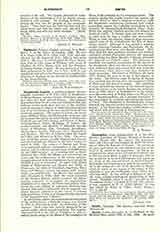

Smaragdus , ARDO, hagiographer, d. at the Benedictine monastery of Aniane, Herault, in Southern France, March, 843. He entered this monastery when still a boy and was brought up under the direction of Abbot St. Benedict of Aniane. On account of his piety and talents he was ordained and put at the head of the school at his monastery. In 794 he accompanied his abbot to the Council of Frankfort and in 814 was made abbot in place of Benedict, who on the invitation of Louis-le-Debonnaire had taken up his abode at the imperial Court at Aix-la-Chapelle. Smaragdus was honored as a saint in his monastery. He is the author of a life of St. Benedict of Aniane which he wrote at the request of the monks of Cornelimünster near Aix-la-Chapelle, where Abbot Benedict had died. It was written in 822, and is one of the most reliable hagiological productions of that period. Mabillon edited it in his “Acta SS. of the Benedictine Order” (saeculum IV, I, 192-217), whence it was reprinted in P.L., CIII, 353-84. It was also edited by Waitz in “Mon. Germ. Script.”, XV, I, 200-29.
MICHAEL OTT

